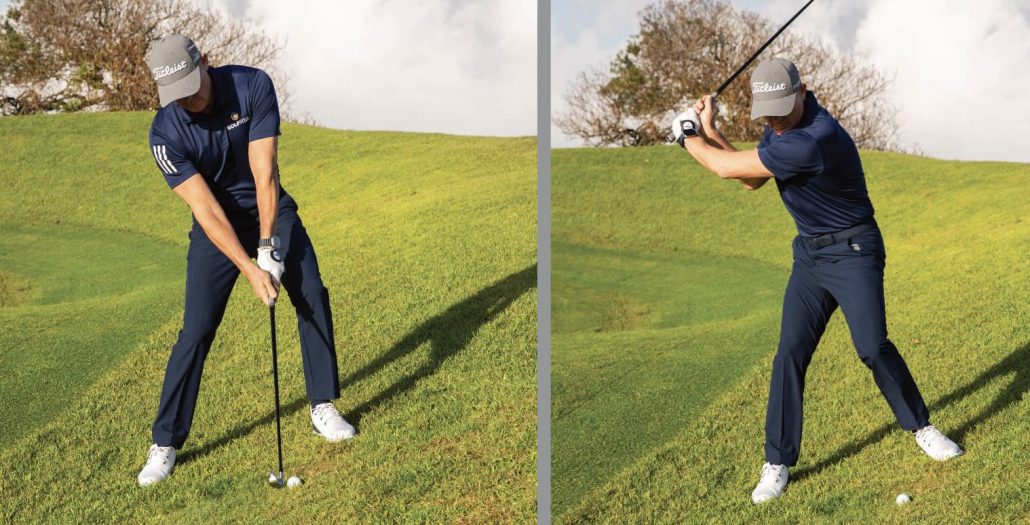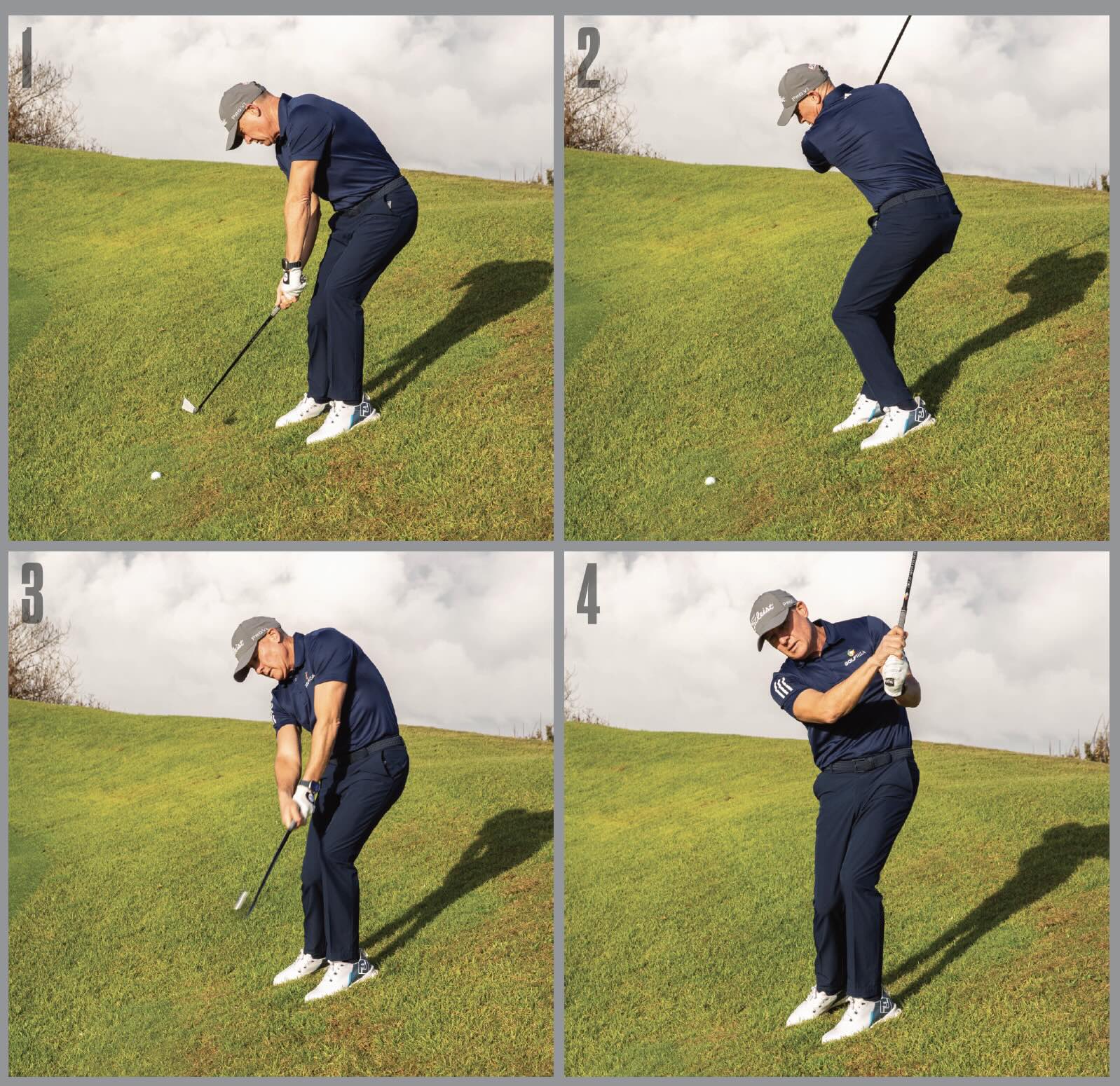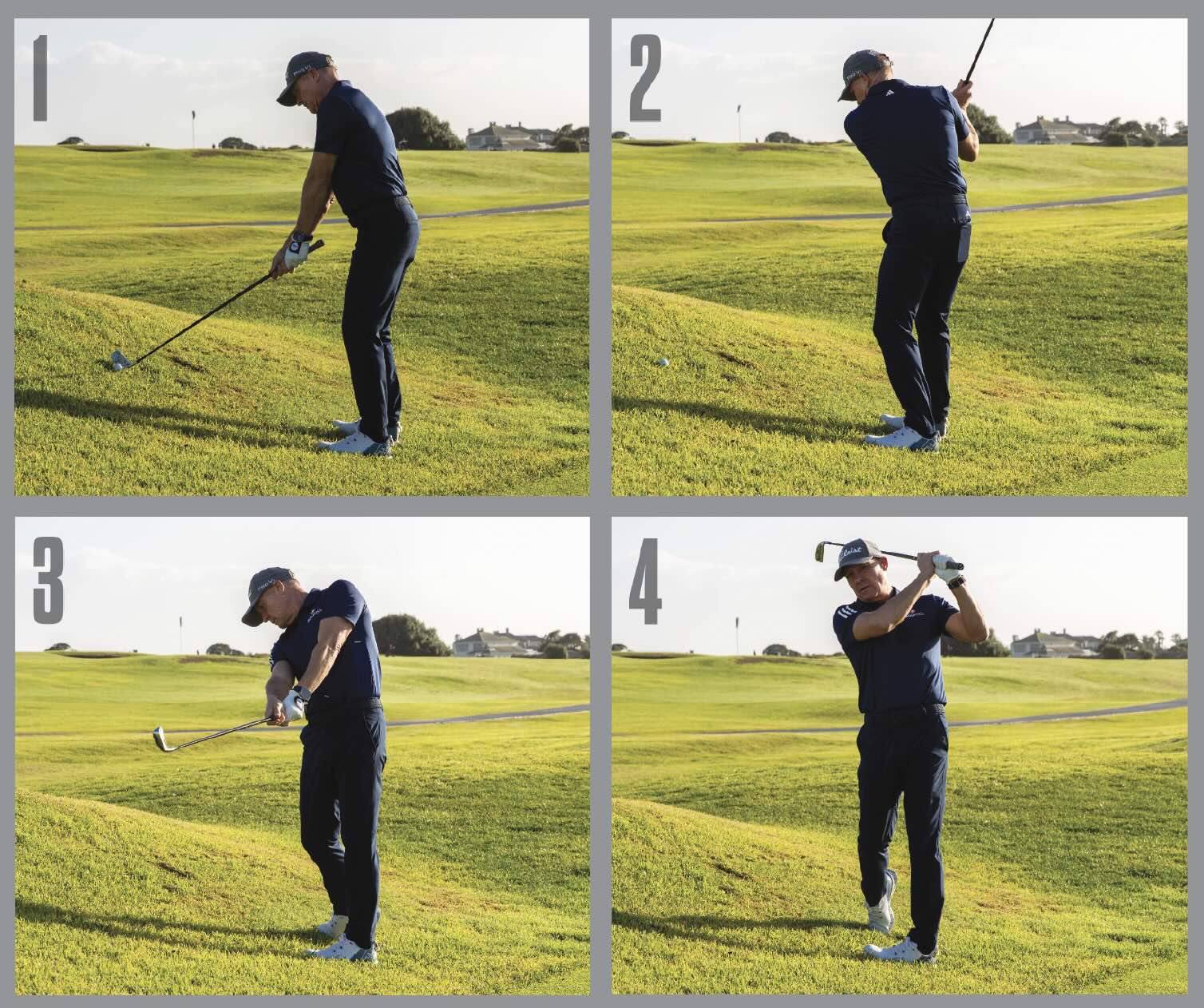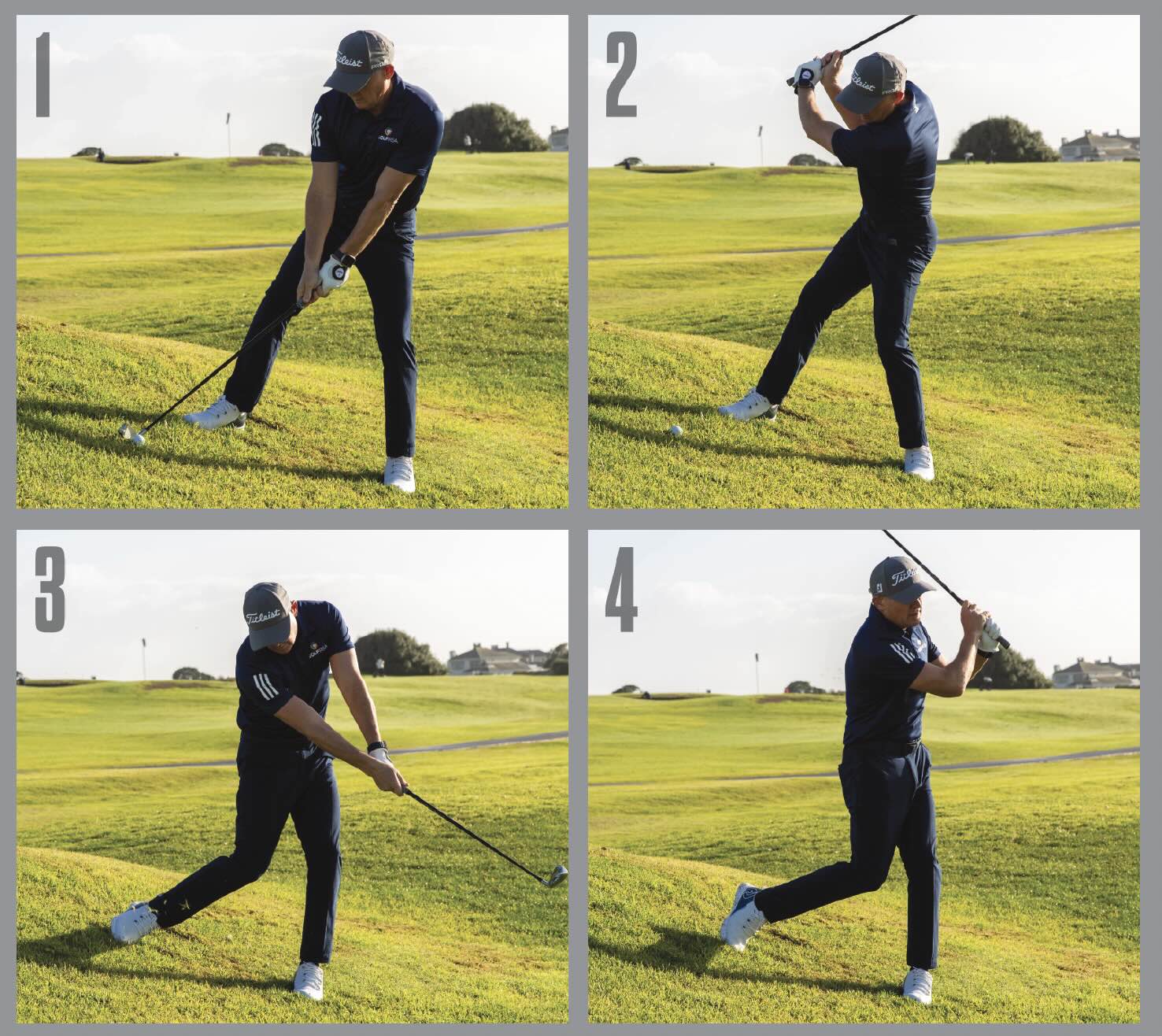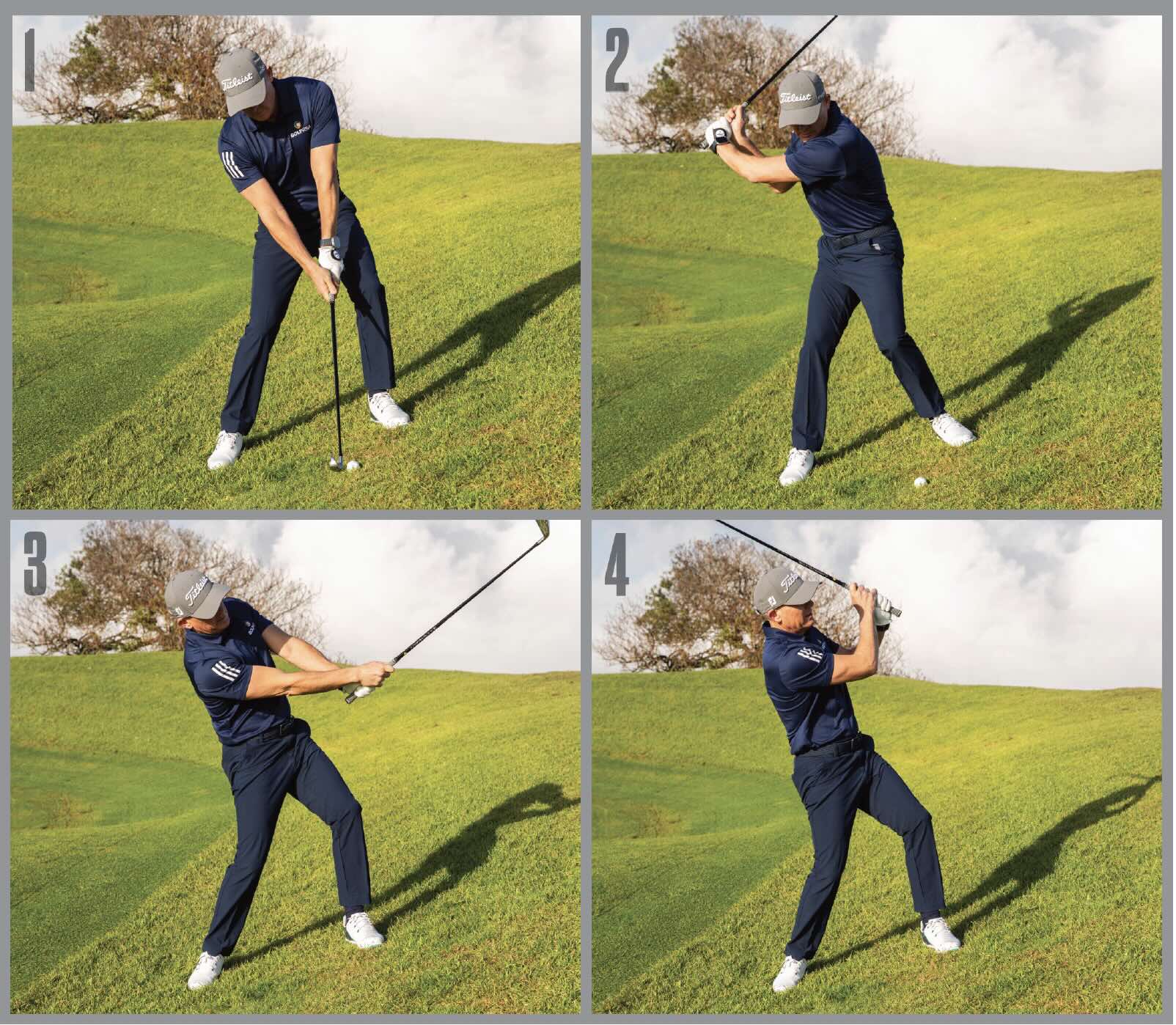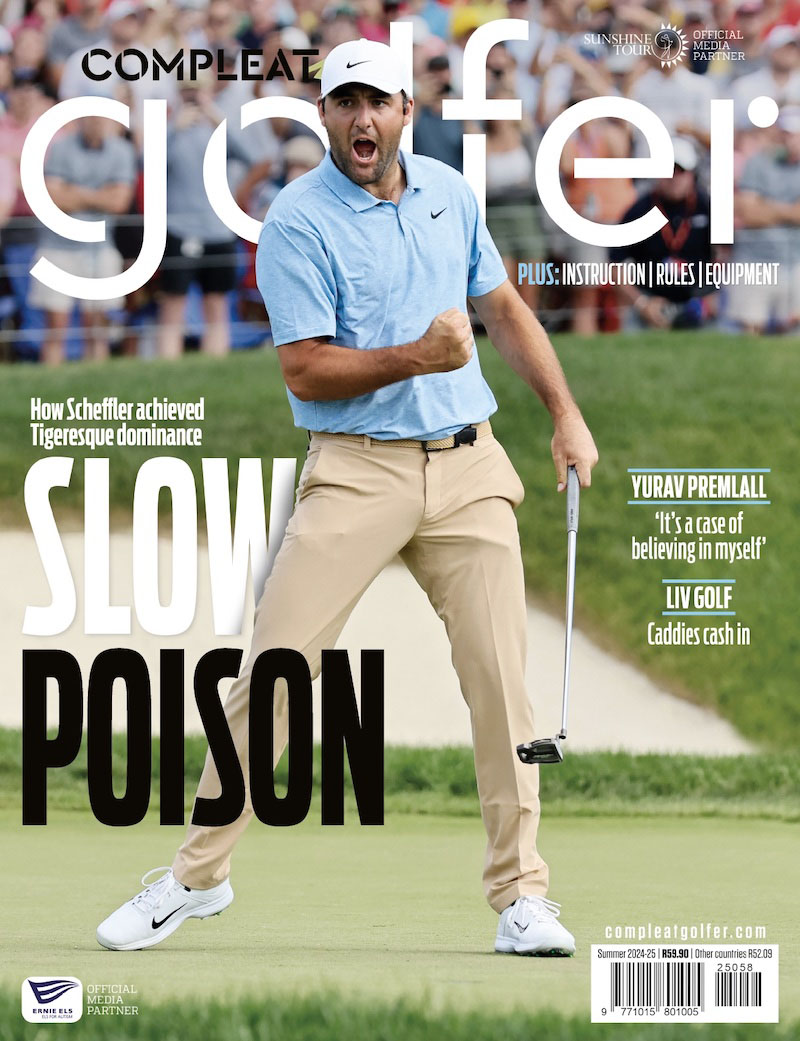Every round has its ups and downs, writes PGA professional GRANT HEPBURN. But you don’t have to let your lie get the better of you.
In most rounds of golf, you will be faced with challenging lies, from uphill and downhill lies to sidehill lies. They can make shots tricky, but if you want to improve your game, you will need to learn how to hit each of these shots.
Of course, it’s not easy to practise shots from uneven lies, as most driving ranges are flat, but it’s important to understand how to play them – so that you can execute on the golf course.
Ball below feet
In this sidehill lie, the ball is way below my feet. Gravity is pulling me down the slope, so balance will play a big role in the execution of this shot. In order to counteract that, I need to sit my weight down into my heels while I hold on to the very end of the golf club – so that I am able to reach the ball, which is far below me.
As an added adjustment, I take at least one more club than I would normally need for the distance of the shot. This not only helps me to reach down to the ball, but also encourages me to take a shorter, more controlled backswing. This helps me keep my balance throughout the swing.
The ball will be closer to my feet than usual, so that I can reach it, and my swing will be a little more upright, in order to help me keep my balance.
As I execute the shot, note my shorter backswing and how I keep my weight back in my heels all the way through the shot.
Even my followthrough is a curtailed movement in order to stop me toppling down the hill and mis-hitting the ball.
Ball above feet
In this situation, with the ball above my feet in a sidehill lie, I need to set my weight a little towards my toes as the hill is pulling me backwards.
The ball is a little closer to me because it is up on the slope and I therefore need to choke down on the club.
Once again, I can’t afford to make a full and aggressive swing at the ball so I might take one club extra and make sure that I choke down sufficiently. The ball will be further away from my feet as I need to create room for my arms to swing without smashing into the slope.
This type of lie can often promote a draw-shaped shot as it encourages more of a baseball-type, flatter swing to match the slope. So, be aware of your aiming in order to allow for a possible right-to- left ball flight. Swing smoothly and don’t try to muscle the ball – clean contact through good balance and rhythm is key in this shot.
Downhill lie
The biggest challenge in a downhill lie shot is to make sure that you don’t strike the ground before the ball. In order to achieve this you must set up with the ball further back in your stance and your hands further forward.
I would also position my weight on my front foot, not only due to gravity but also to ensure that the club can get to the back of the ball before it hits the slope. A big key in this shot is to take a club with more loft than usual, as the slope angle, together with your hands being forward at address, will deloft the clubface, so you will need extra loft to counter that.
When I make the swing, I focus on ensuring that I hit down and through the ball. I keep swinging the club down the slope through impact and beyond in order to hit the ball first.
Any attempt to lift the ball into the air and follow through high will lead to a scuffed shot. Instead I really try to swing with the slope for as far as possible to get this ball flying towards the target.
Uphill lie
When facing an uphill lie, my weight will predominantly be on my back foot, once again due to gravity. The ball needs to be forward in my stance because this is most likely where the club will come into contact with the upslope.
Since the upslope will exaggerate the loft on the clubface and the ball will fly pretty high anyway, I select a club with less loft for the shot.
In my backswing I need to be careful not to over-swing, otherwise I could topple back down the slope. The downswing becomes a challenge to transfer my weight because I am essentially trying to climb the hill with my legs. As a result, I will never be able to fully transfer my weight to my left foot.
This usually leads to my hands and arms ‘beating my legs’, which tends to result in a slight pull shot. It is advisable to allow for this slight pull in your aiming, as it will be a likely outcome of the upward slope hindering your weight transfer to the left. Once again, swing smoothly and try to maintain balance throughout the shot.
– This article first appeared in the Autumn 2025 issue of Compleat Golfer magazine.


